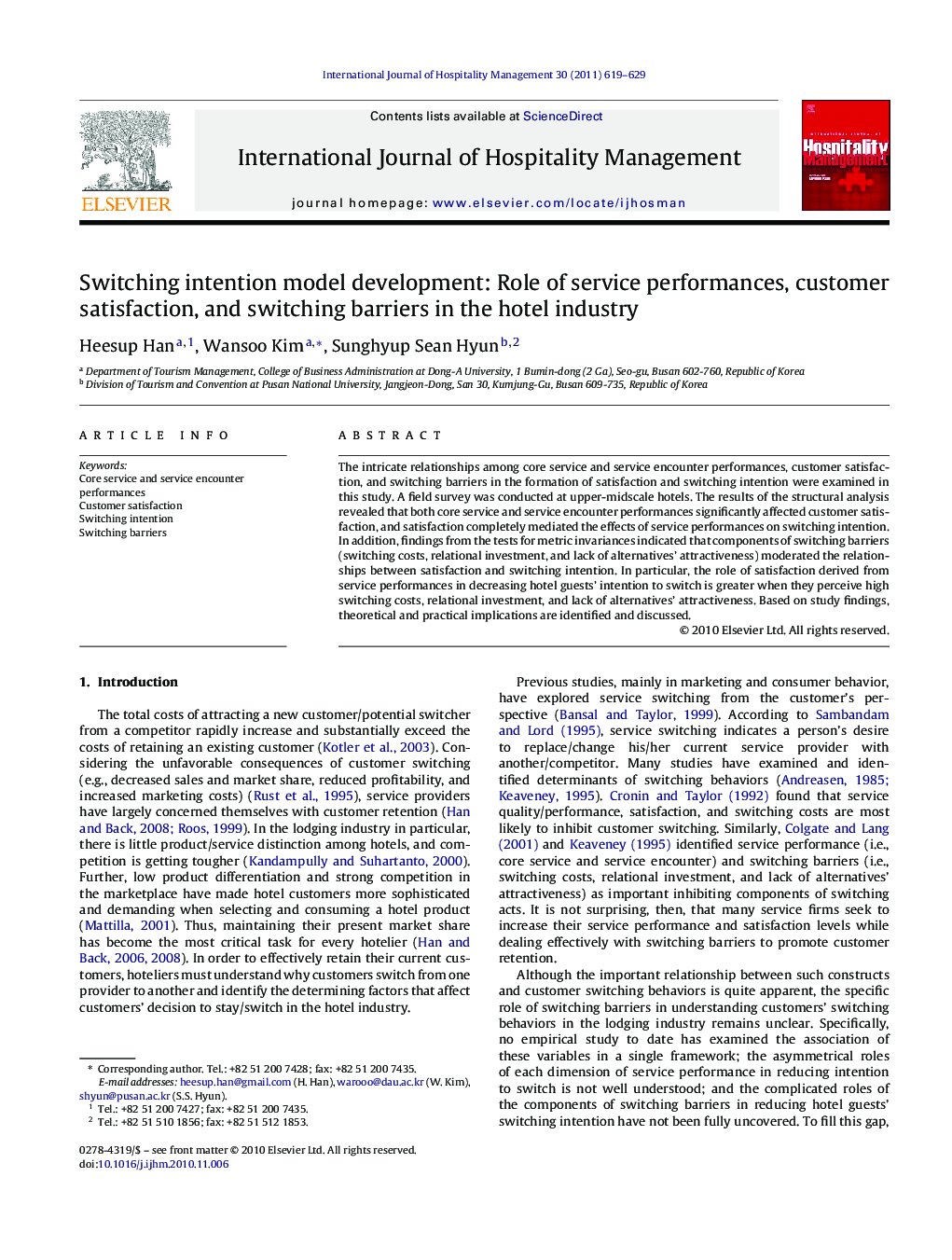| Article ID | Journal | Published Year | Pages | File Type |
|---|---|---|---|---|
| 1009964 | International Journal of Hospitality Management | 2011 | 11 Pages |
The intricate relationships among core service and service encounter performances, customer satisfaction, and switching barriers in the formation of satisfaction and switching intention were examined in this study. A field survey was conducted at upper-midscale hotels. The results of the structural analysis revealed that both core service and service encounter performances significantly affected customer satisfaction, and satisfaction completely mediated the effects of service performances on switching intention. In addition, findings from the tests for metric invariances indicated that components of switching barriers (switching costs, relational investment, and lack of alternatives’ attractiveness) moderated the relationships between satisfaction and switching intention. In particular, the role of satisfaction derived from service performances in decreasing hotel guests’ intention to switch is greater when they perceive high switching costs, relational investment, and lack of alternatives’ attractiveness. Based on study findings, theoretical and practical implications are identified and discussed.
Research highlights▶ In the present study, we developed a model that explains the formation of switching intention by considering the relationships among service performances, customer satisfaction, and switching barriers (moderator). We conducted a filed survey at upper-midscale hotels. Based on the results of quantitative analysis, we concluded that such variables have a critical role in explaining guests’ switching intention.
